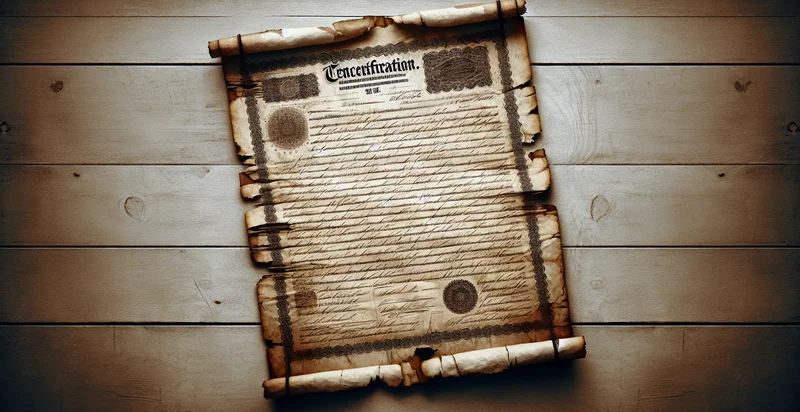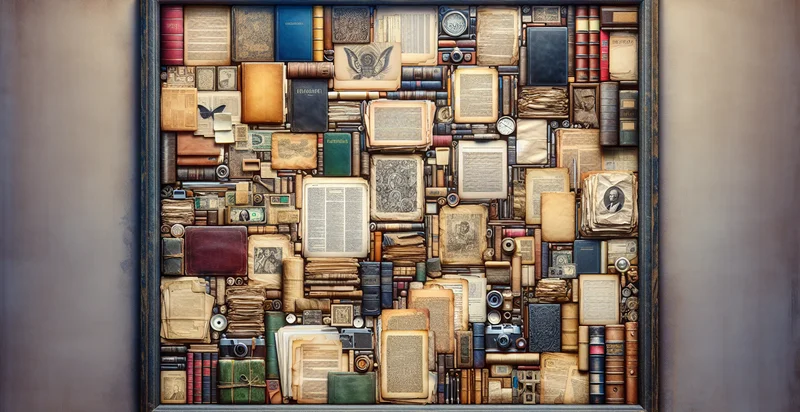Identify if a document is tattered
using AI
Below is a free classifier to identify if a document is tattered. Just upload your image, and our AI will predict if it's tattered - in just seconds.

Contact us for API access
Or, use Nyckel to build highly-accurate custom classifiers in just minutes. No PhD required.
Get started
import nyckel
credentials = nyckel.Credentials("YOUR_CLIENT_ID", "YOUR_CLIENT_SECRET")
nyckel.invoke("if-a-document-is-tattered", "your_image_url", credentials)
fetch('https://www.nyckel.com/v1/functions/if-a-document-is-tattered/invoke', {
method: 'POST',
headers: {
'Authorization': 'Bearer ' + 'YOUR_BEARER_TOKEN',
'Content-Type': 'application/json',
},
body: JSON.stringify(
{"data": "your_image_url"}
)
})
.then(response => response.json())
.then(data => console.log(data));
curl -X POST \
-H "Content-Type: application/json" \
-H "Authorization: Bearer YOUR_BEARER_TOKEN" \
-d '{"data": "your_image_url"}' \
https://www.nyckel.com/v1/functions/if-a-document-is-tattered/invoke
How this classifier works
To start, upload your image. Our AI tool will then predict if it's tattered.
This pretrained image model uses a Nyckel-created dataset and has 2 labels, including Not Tattered and Tattered.
We'll also show a confidence score (the higher the number, the more confident the AI model is around if it's tattered).
Whether you're just curious or building if a document is tattered detection into your application, we hope our classifier proves helpful.
Related Classifiers
Need to identify if a document is tattered at scale?
Get API or Zapier access to this classifier for free. It's perfect for:
- Document Archiving: This function can be utilized by archival institutions to assess the condition of historical documents before digitization. By identifying tattered documents, archivists can prioritize restoration efforts, ensuring that fragile items are not damaged during processing.
- Library Inventory Management: Libraries can implement this image classification function to regularly scan and evaluate the condition of their collections. By flagging tattered books, librarians can take timely action for repairs or replacements, improving the overall quality of their offerings.
- Insurance Claims Processing: Insurance companies could use this technology to evaluate damaged documents submitted as part of claims. By identifying tattered documents, they can speed up the validation process and ensure fair assessment of claims for clients with damaged assets.
- Quality Control in Publishing: Publishers can integrate this function into their printing systems to monitor the condition of printed materials in real-time. By identifying tattered output, they can ensure only high-quality printed books and materials reach consumers, enhancing brand reputation.
- Document Restoration Services: Restoration services can use this image classification function to help assess incoming documents for repair. Tattered items can be flagged for specialized remediation techniques, streamlining the workflow and improving customer satisfaction.
- E-commerce Inspection: Online retailers specializing in vintage or used goods could leverage this function to automatically screen product listings for tattered documents. By identifying items that do not meet quality standards, sellers can provide accurate descriptions and avoid customer returns.
- Educational Material Assessment: Educational institutions can utilize this technology to regularly assess the condition of teaching materials. By identifying tattered documents, schools can allocate resources for replacement and repair, ensuring that students have access to quality educational resources.


